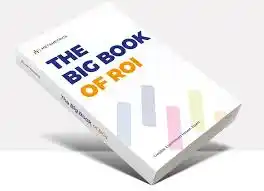Demystifying ROI: A Comprehensive Guide for American Investors

Return on Investment (ROI) stands as a cornerstone concept. It’s the ultimate measure of profitability, the gauge that helps investors determine the success of their ventures.
Whether you’re a seasoned investor or just starting your investment journey, understanding ROI is crucial.
This comprehensive guide aims to demystify ROI for American investors, providing you with a clear understanding of its significance, calculation, and practical applications.
What is ROI and Why Does it Matter?
ROI, or Return on Investment, is a financial metric used to evaluate the efficiency and profitability of an investment.
It measures the gain or loss generated on an investment relative to its initial cost. In simpler terms, ROI helps you assess whether an investment is worth the risk you’ve taken.
How is ROI Calculated?
The ROI formula is straightforward: [(Net Profit / Cost of Investment) x 100]. Net Profit is calculated by subtracting the cost of the investment from the final value it generates.
The result is then multiplied by 100 to express it as a percentage. For example, if you invested $10,000 and earned a net profit of $2,000, your ROI would be [(2,000 / 10,000) x 100] = 20%.
Understanding Positive and Negative ROI
A positive ROI indicates that the investment has generated a profit greater than its initial cost. For instance, an ROI of 10% means you’ve earned a 10% profit on your investment.
On the other hand, a negative ROI signals that the investment has resulted in a loss. A -10% ROI would mean a 10% loss on the investment.
ROI vs. Risk: Balancing Your Investments
ROI doesn’t exist in isolation; it’s closely linked to risk. High returns often accompany high risk, while safer investments might yield lower returns.
As an investor, it’s crucial to strike a balance between ROI and risk that aligns with your financial goals and risk tolerance.
A well-diversified portfolio can help you manage risk while aiming for favorable ROIs.
FAQs
What’s a good ROI percentage to aim for?
The ideal ROI varies depending on factors like the investment type, industry, and market conditions. Generally, an ROI higher than the inflation rate and other low-risk investment options is considered favorable. However, it’s essential to consider risk and your investment goals.
Can ROI be negative?
Yes, ROI can be negative, indicating that your investment has resulted in a loss. Negative ROIs can occur due to market fluctuations, poor decisions, or unforeseen circumstances.
Is a high ROI always better?
Not necessarily. While a high ROI is attractive, it often accompanies higher risk. It’s essential to assess whether the investment aligns with your risk tolerance and long-term objectives.
How often should I calculate ROI?
The frequency of calculating ROI depends on the investment’s nature. For long-term investments, you might calculate it annually or when a significant event occurs. Short-term investments might warrant more frequent calculations.




